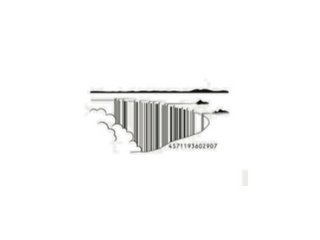
The cruise industry is looking at 8-20% predicted growth but even as it does so, the sun is setting for the cruise.

The problem: The industry and its customers are aging. On the average ship three quarters of the passengers will be over 65 years old. This growth is fueled by the aging of the US and the UK.

The cruise is attracting people who grew up in the golden days of stylish and adventurous cruises of the 1930s to 60s and now find themselves with time and money to spare in their retirement.
But now this reliance on older passengers is steering the industry into dangerous waters. As the industry rushes to cater to today's older audience they are creating a very dubious future for the cruise:

A floating care home. That'll be just the image the industry needs.
As the people who can actually remember the glory days of cruises dwindle this is the image the new potential passengers inherit. Soon this will be the defining image of the cruise. And this is the danger amid the success. Yes, the UK and the US are an aging society so you're looking at increasing numbers of potential customers but we are now also an aging society in denial. Nobody wants to feel old, especially the elderly. Seniors are in revolt against relegation and ghettoisation. The cruise industry can cash in on this watery Logan's Run now but the new generation of senior citizens won't want to go - for a start they have second homes in Hawaii and Spain to go to, thank you. As for the younger consumer, their interest will be lost forever.
And we don't have to wait til then, the cruise today already is looking pretty elderly. Its aesthetics are all wrong. In the past the cruise industry represented glamour. Look what we have today:

Exhibit A: cruise liner names, reminiscent of pizza variants and drag queens. The language of attempted glamour, now rendered kitsch.

Exhibit B: the cruise liner offering - a floating Guildford. A provincial main street on water. Cruises replicate home in an age where people want new and exciting locations.

Glamour now belongs to destination hotels with names like Banyan Tree, W, St Martins Lane and The Met because which provide unique and stylish experiences.
Cruises need a major refit to regain their glamour. How about a week on a Philippe Starck designed cruise liner? Or floating through the Carribean in a chic Thai-style spa? Sounds more like it eh?
Next up Cruises need to rethink their offering to fit with today's lifestyle and make the most of the bound location. What will make staying on board make sense?Howw about self-improvement cruises? Weight loss cruises? Career mentoring cruises? Soap-opera marathon cruises? Plastic surgery cruises? Wellbeing cruises?
The cruise industry also needs new destinations. A vital part of cruises' past glamour were the exotic destinations. How about cruises to today's hip destinations?Morocco? Kerala? Iceland? New York? Tokyo? Shanghai? The cruise needs to rediscover its adventurous spirit.
And in the short term the cruise industry needs to find some cool friends. They should use co-branding to attract younger audiences and challenge the imagery around cruises. What about a FHM cruise? a Vogue Cruise? a Nike Cruise? a Ministry of Sound cruise? a Prada Cruise? a Play Station cruise? a Virgin (the brand, that is) cruise? They might not be long term loyalty builders but they would challenge people's preconceptions about who cruises are for.

Another approach: look to new markets
China's economy is booming and people are looking at new ways to spend an increasing disposable income. People are also looking for status and new experiences.
Cruises in the past rose with the emerging middle classes so why don't they follow the rise of new middle class in the East?

The Chinese want something exotic too and in China the Queen Mary 2 will be foreign and exciting. Play up the western heritage, keep prices high for exclusivity and status, make gourmet food your focus and fit karaoke rooms.
Say 'ni hao' to a younger audience and a lease of life.

There's two routes back to open water for cruises:
Change to be more enticing to the modern holiday maker or go east to find a new generation of admirers.
Otherwise the industry is looking at retirement and its own scrapyard care home.







